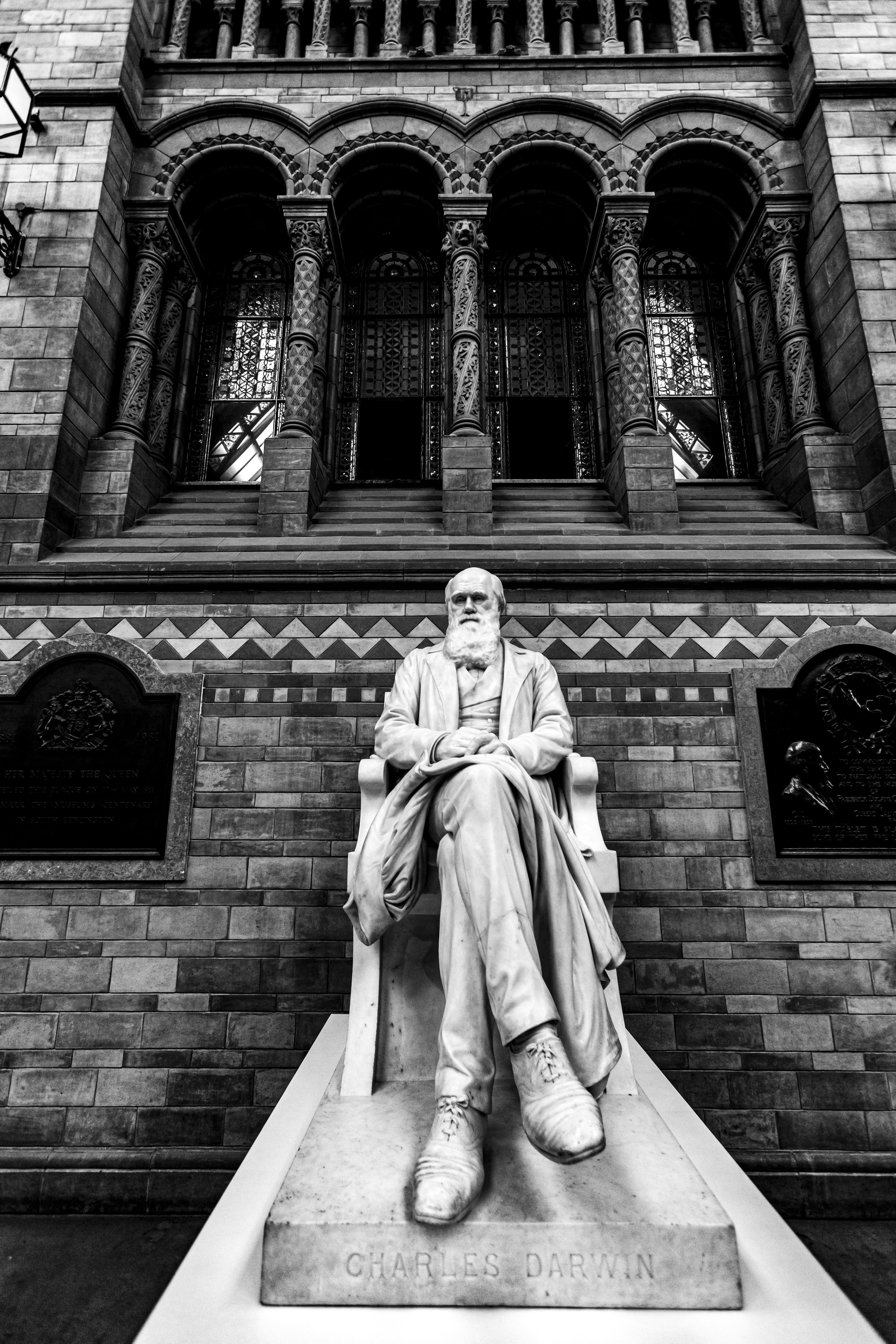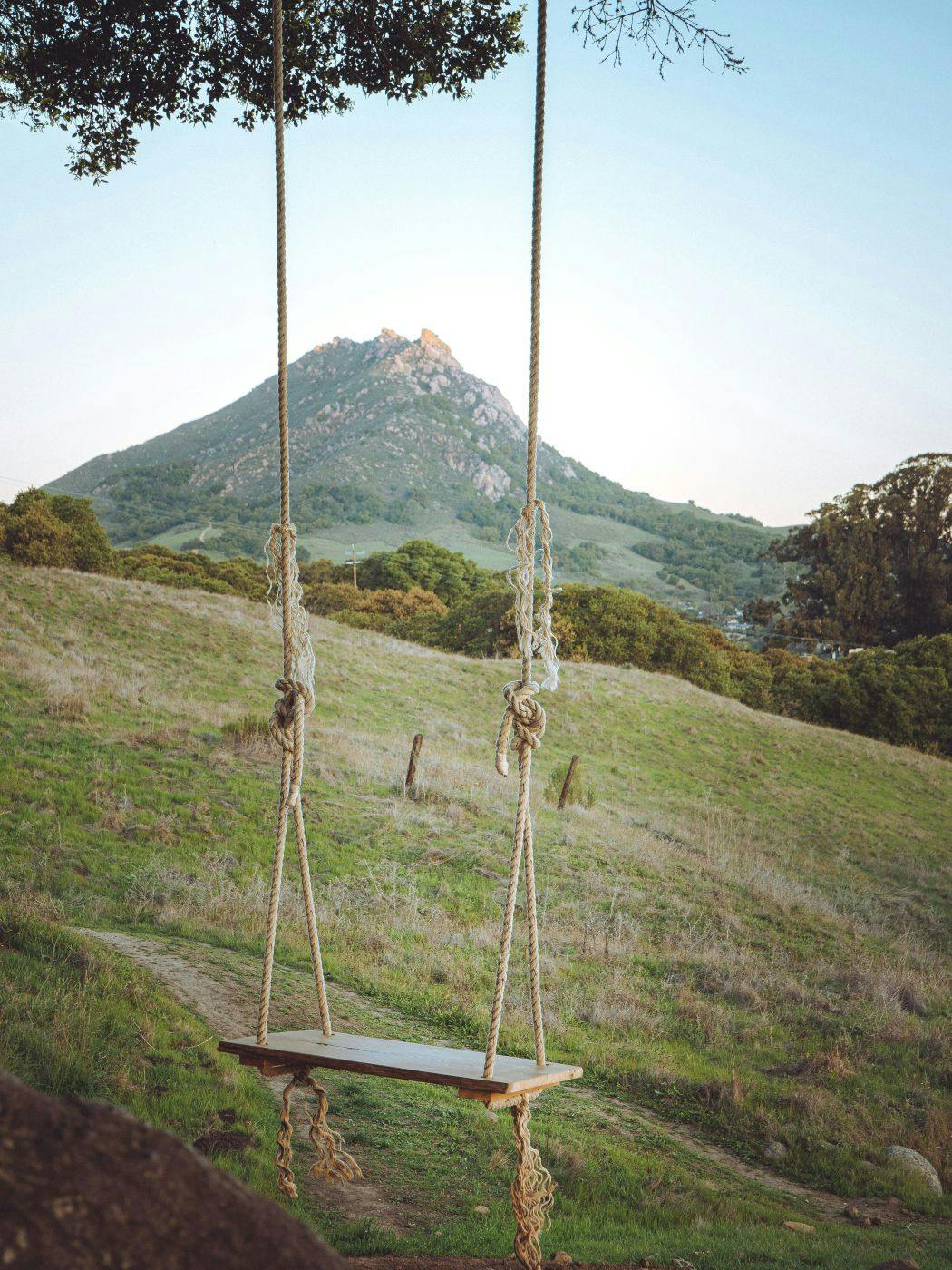

An evolving brand isn’t just reactive; it’s resilient. It’s a living system, built to respond to change, nurture connections, and grow stronger over time.
In my small hometown, there was a stationery shop: J. Charles & Sons. This was a stationery shop out of the history books. Wood floors that creaked, shelves of paper, and cases of top-quality pens. You could get everything from a Pitney Bose to a Bic pen. I loved this place. There were art supplies and books on drawing. There were Moleskine books; in fact, I bought my first ever Moleskine there. And the atmosphere—somehow, when you walked in, you suddenly felt the need to speak in soft tones and step quietly. Mr. Charles, or maybe he was a son—either way, he always wore a three-piece suit and a bow tie. He looked like someone who had stepped from the pages of a dusty ledger when the store opened, and some young girl opened it as her morning duty, and out stepped Charles.
The shop got older, and Mr. Charles didn't keep it up. The air grew dusty, and the shelves became cluttered, and no one cared. The display cases with Montblanc pens and reams of high-end paper were empty or only partially filled. The store fell into disrepair, and it was sad.
One day, when I was visiting home from college, I stepped into the shop because I wanted to buy a nice pen. Mr. Charles greeted me. He looked a bit disheveled, and his tie was crooked. We exchanged greetings, and he looked at me from the lens of the past. He said, “I know you. You used to come in here a lot.” I assured him I did and told him of my love of stationery and a nice heavy pen. He got a little wistful, explaining that he didn’t stock computers because he didn’t believe in them—no Macs or PCs here. He liked pens and nice paper with a good tooth, and he believed others did as well.
As we chatted, he dug through his waistcoat pocket for the key to the pen case. We glanced around the now deeply neglected shop. He said, matter-of-fact, no remorse, just the facts, “I'm closing.” He showed me a deeply discounted Montblanc and then said he had some more in back, and off he went, dust rising with each step.
I looked around the place, and it made me sad. On the other side of town, Best Buy had just opened, and people were flocking to it for computers, cameras, and all manner of high-tech and even low-tech items like pens. Mr. Charles returned. “They have packages of pens over at that new place, but nothing nice, nothing heavy, nothing worthwhile,” he told me as he presented two exquisite pens. He told me he could have sold computers and tech, but he liked stationery. That’s why his grandfather opened the shop, why his father worked there, and why he worked there—because he liked the feel of a pen, the smell of excellent paper, and the idea of writing letters.
The signage on the shop was lovely: black and gold, the name of the shop, established, etc. It stuck out among the new stores, the CVS, the Golden Dragon Chinese spot. This shop stood like a sentinel of time, promising simplicity and elegance, yet it was ignored for the quick and cheap offerings of CVS.
“Pens,” Mr. Charles said as he placed the two new ones on a piece of thick black velvet, “should feel like an extension of the arm, natural in the hand, should make you want to glide words onto the page for hours and hours.” I agreed, because I honestly feel the same way. He smiled, looked at his now dusty, disheveled shop, and said again, “I’m closing.” Then he slipped a black Montblanc fountain pen into my coat pocket and said, “Keep writing.”
Six months later, the shop was a family dental clinic.
Stories like J. Charles & Sons aren’t just nostalgic—they’re instructive. Mr. Charles ran a shop full of care, quality, and attention to detail, but the market around him changed. New competitors, new technologies, and shifting customer priorities created an environment that demanded adaptation. Brands, much like this beloved stationery shop, live in dynamic markets. Those that evolve—without losing their identity—thrive. Those that don’t risk fading into memory, no matter how much love, craftsmanship, or care they put into what they create.
An evolving brand isn’t just reactive; it’s resilient. It’s a living system, built to respond to change, nurture connections, and grow stronger over time. The best brands anticipate shifts, adapt gracefully, and remain true to their core, balancing the new with the familiar.

Understand Your Market’s Pulse
The story of J. Charles & Sons is more than a memory of a beloved stationery shop—it’s a lesson in staying connected to your market. Mr. Charles loved his craft, valued quality, and cared deeply about the experience he offered. But love alone couldn’t sustain the shop. The market was shifting. Competitors arrived with faster, cheaper, and more convenient alternatives. Customers’ needs evolved. And despite the shop’s charm and heritage, it couldn’t meet those changing demands.
For a brand to thrive, it must act like a living organism: sensing, responding, and adapting to its environment. This begins with a deep understanding of your market—its behaviors, preferences, and evolving expectations. Ask yourself:
- Who are your customers today, and who might they become tomorrow?<br />
- What solutions do they seek, and how are their priorities shifting?<br />
- Which competitors or alternatives are drawing their attention, and why?<br />
Brands that maintain a finger on the pulse of their market can anticipate change rather than react to it. This doesn’t mean abandoning what makes your brand unique—far from it. It means learning where the gaps exist, understanding how your ecosystem fits into the broader market, and evolving in ways that strengthen your core identity.
In the same way, Mr. Charles could have pivoted to selling computers, but chose not to; your brand must make intentional decisions about which aspects of the market to embrace—and which to ignore. The key is adaptability without compromise: honoring your essence while remaining relevant.
Brands that master this balance are resilient, not fragile. They evolve naturally, building a network of offerings, experiences, and relationships that grow stronger over time. In short, they operate as ecosystems—living, responsive, and designed to thrive even as the world around them changes.
Designing Your Brand to Evolve
Understanding your market is the first step—but a brand isn’t just a passive observer. It’s a living system that must adapt, respond, and grow. Designing a brand that evolves starts with intentionally structuring it to be flexible, resilient, and deeply connected to its ecosystem.
- Anchor in Your Core Purpose<br />Your brand’s essence—the reason it exists beyond making money—is the foundation that keeps it steady through change. Mr. Charles didn’t sell computers because his purpose was not about transactions; it was about the joy of writing, the feel of a pen in your hand, and the experience of quality stationery. A brand with a clearly defined purpose can evolve around its market without losing its identity.<br />
- Create Flexible Touchpoints<br />Think of every interaction—online or offline, product or service—as a node in your brand ecosystem. Each touchpoint should be flexible enough to adapt as customer needs shift. A website might evolve from a simple product catalog to a hub of education, community, or experience. Packaging might change to meet sustainability trends, or social media might shift from awareness-building to direct engagement. Each element is connected, yet adaptable, allowing the brand to flow naturally with market change.<br />
- Build Feedback Loops<br />Brands that evolve don’t operate in isolation. They actively listen to their customers, partners, and even competitors. Feedback loops—whether through surveys, community engagement, or analytics—provide the insights that guide evolution. Mr. Charles could have observed the tech-driven shift in his market earlier, but without structured feedback, adaptation is reactive rather than proactive. A living brand actively senses changes in its environment.<br />
- Design for Incremental Evolution<br />Evolution doesn’t happen overnight. The strongest brands adjust incrementally, testing small changes, learning, and iterating. These micro-evolutions add up, creating a brand that can grow gracefully with its market rather than collapsing under sudden shifts. Think of it as pruning a garden: each adjustment supports the whole system, keeping it healthy and vibrant.<br />
- Connect to a Larger Ecosystem<br />Finally, remember that your brand exists within a broader ecosystem of products, experiences, and relationships. Successful brands don’t just sell; they participate, contribute, and influence the world around them. By viewing your brand as part of a larger system, you can anticipate opportunities, strengthen partnerships, and innovate in ways that reinforce your core identity while embracing change.<br />
A brand designed to evolve isn’t just prepared for the next trend—it is resilient enough to thrive as the world changes around it. By anchoring in purpose, creating adaptable touchpoints, listening actively, evolving incrementally, and connecting to the ecosystem, your brand becomes a living entity capable of enduring—and thriving—over time.

Brands That Evolved Without Losing Their Soul
It’s one thing to talk about designing a brand to evolve, and another to see it in action. Some brands offer clear lessons in resilience, adaptability, and staying true to their core purpose—even as markets shift.
1. LEGO: From Bricks to Experiences<br />LEGO has been around for decades, but it didn’t survive by selling the same plastic bricks alone. When digital entertainment started capturing children’s attention, LEGO pivoted, introducing video games, movies, and immersive experiences. Yet, at the core, LEGO remained a brand about creativity, imagination, and hands-on play. LEGO’s evolution shows how a brand can expand its ecosystem without abandoning its essence.
2. Starbucks: More Than a Coffee Shop<br />Starbucks didn’t just sell coffee—it sold an experience. When the market demanded convenience and digital engagement, Starbucks adapted, creating mobile ordering, rewards programs, and community-driven initiatives. Yet its brand identity—community, quality, and the “third place” concept—remained intact. By treating its brand as an evolving ecosystem of touchpoints and experiences, Starbucks stayed relevant across decades.
3. Patagonia: Purpose Meets Adaptability
Patagonia has long stood for environmental activism and high-quality outdoor gear. When the market shifted toward conscious consumerism, Patagonia doubled down on its mission, innovating in sustainable materials, repair programs, and advocacy campaigns. Instead of chasing every trend, Patagonia evolved in ways that reinforced its core identity, demonstrating that purpose-driven evolution can actually strengthen brand loyalty.
4. Apple: Anticipating the Next Wave<br />Apple has repeatedly evolved without losing its essence of design, simplicity, and user experience. From personal computers to music players, smartphones, and wearables, Apple’s ecosystem expanded methodically. Every innovation connected back to its core promise: intuitive, beautifully designed technology that enhances life. Apple illustrates how brands can grow in new directions while keeping a coherent identity at the center.
What these examples teach us:
- Evolution doesn’t mean abandoning your core purpose—it means amplifying it in new ways.<br />
- A brand ecosystem is more than products; it’s experiences, interactions, and relationships.<br />
- Successful evolution requires listening to the market, anticipating shifts, and making intentional choices that reinforce, rather than dilute, your identity.<br />
Brands that evolve thoughtfully—like LEGO, Starbucks, Patagonia, and Apple—aren’t just responding to change. They are orchestrating it, positioning themselves as resilient ecosystems that adapt without losing their soul.
Building Your Own Evolving Brand Ecosystem
The story of Mr. Charles’ stationery shop, combined with brands like LEGO, Starbucks, Patagonia, and Apple, teaches us a crucial lesson: evolution isn’t accidental. It requires intention, structure, and a deep connection to the world your brand inhabits.
Here’s a practical framework for creating a brand that can evolve gracefully:
1. Define Your Core Purpose<br />Before anything else, be clear about why your brand exists. Your purpose is your anchor—it guides decisions, informs strategy, and ensures that evolution doesn’t compromise identity. Ask yourself: If everything else changed tomorrow, what would remain essential to our brand?
2. Map Your Ecosystem<br />Think beyond products or services. Your brand ecosystem includes touchpoints, customer experiences, partners, and even the cultural context in which you operate. Visualize how each element connects and influences the others. This helps you identify areas for innovation without breaking the system.
3. Listen and Learn<br /> Create feedback loops to sense changes in your market. Surveys, social listening, customer interviews, and analytics are all tools to gather intelligence. The goal is to anticipate shifts before they become crises, ensuring your brand evolves proactively.
4. Evolve Incrementally<br />Big leaps can be risky. Start with small, deliberate changes—testing, learning, and refining as you go. Each adaptation strengthens your ecosystem and prepares you for larger evolution over time.
5. Stay True While Exploring<br />Innovation should always align with your core purpose. Evolution doesn’t mean chasing every trend; it means expanding, experimenting, and adapting in ways that reinforce your brand’s identity. The best brands grow by staying authentic, not by trying to be everything to everyone.
6. Monitor Your Environment<br />Markets, technologies, and customer behaviors are constantly shifting. Treat your brand as a living system: continuously scan the environment, anticipate change, and adjust accordingly. This ongoing awareness ensures your brand remains resilient and relevant.
By following these steps, you create a brand that is not only adaptable but thriving—a living ecosystem designed to withstand the test of time. Just like the finest pens Mr. Charles treasured, a thoughtfully evolved brand fits naturally into its market, feels effortless to engage with, and inspires loyalty through every interaction.

Summing Up
Walking out of J. Charles & Sons that day, I felt a mix of nostalgia and clarity. Mr. Charles loved what he did, but even passion couldn’t sustain a brand disconnected from its evolving market. His story reminds us that brands—like people, like ecosystems—thrive when they adapt while staying true to their essence.
At ThoughtLab, we think of brands as living systems. Each touchpoint, experience, and relationship is a node in a larger ecosystem. When these nodes grow in harmony with the market, the brand doesn’t just survive—it evolves, strengthens, and inspires loyalty. When they stagnate or ignore the signals around them, even the most beloved brands can fade away.
Designing a brand to evolve isn’t about chasing every trend or overhauling your identity every year. It’s about observing, listening, and intentionally shaping your ecosystem so it can respond and grow naturally. It’s about building resilience into your brand DNA.
So whether you’re a small business or a global powerhouse, remember this: your brand is alive. Nurture it. Watch it. Adapt it thoughtfully. And like the gift of that Montblanc fountain pen from Mr. Charles, create experiences that make people want to keep coming back, keep engaging, and keep believing in what your brand stands for.
Brands that evolve with purpose are more than just companies—they are ecosystems, ready to thrive in a world that never stops changing. And that’s exactly the kind of thinking we champion at ThoughtLab.
